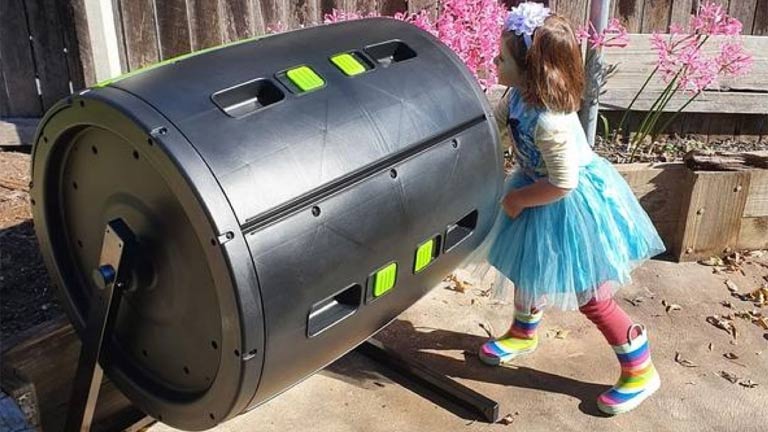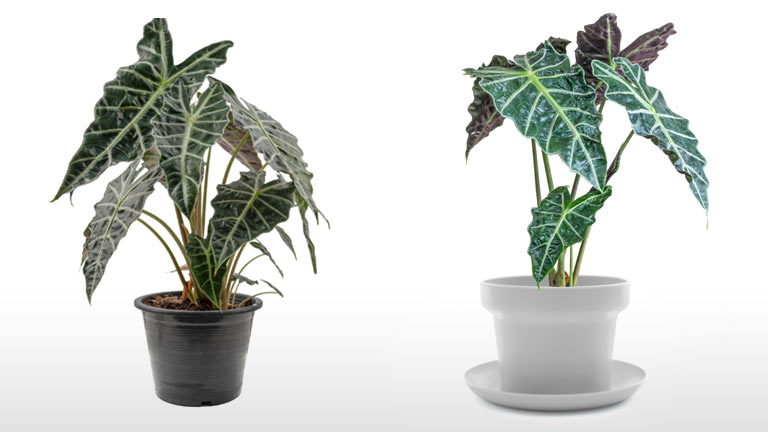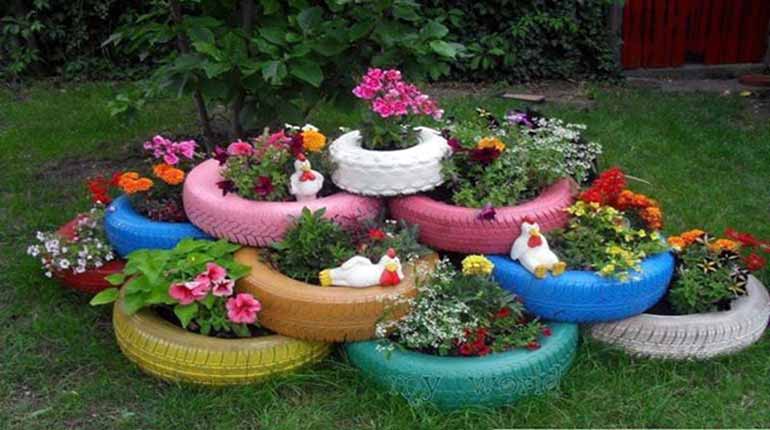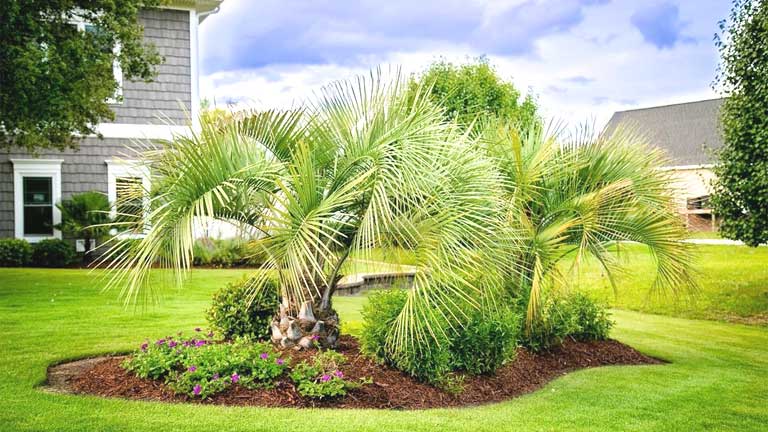
Composting is a natural way to transform organic waste into nutrient-rich soil amendments. It diverts organic materials from landfills, reducing the burden on waste disposal sites. By recycling kitchen scraps, yard trimmings, and other organic matter, composting contributes to a greener environment.
Compost tumblers are innovative composting systems designed to expedite decomposition while minimizing unpleasant odors and deterring pests. They offer a convenient and efficient way to compost, especially for those with limited outdoor space.
In this article, we’ll delve into the pros and cons of compost tumblers, helping you decide whether investing in one aligns with your composting needs and lifestyle.
What is a Compost Tumbler?
A compost tumbler is a rotating container that facilitates the decomposition of organic waste through aeration and mixing. By turning the tumbler regularly, composting materials are exposed to oxygen, accelerating the composting process.
They come in various designs and sizes, catering to different composting capacities and space requirements. From compact models suitable for balconies to larger tumblers ideal for extensive gardens, a wide range of options are available.
Compost Tumblers vs. Traditional Composting
Compost tumblers and traditional composting methods each have their unique attributes, catering to different composting needs. Compost tumblers offer convenience with their enclosed design, faster composting process, and aesthetics, making them ideal for urban dwellers and those with limited space. Their rotating mechanism facilitates regular aeration and ensures a more controlled composting environment.
On the other hand, traditional composting methods, such as open bins or heaps, provide greater composting capacity and can handle larger volumes of organic waste. They require more hands-on effort, but they allow for a more extensive composting process with less initial investment. Choosing between compost tumblers and traditional composting depends on factors like available space, composting goals, and the level of involvement one prefers. Whether seeking efficiency or a hands-on approach, both methods contribute to sustainable gardening practices and environmental preservation.
Advantages of Compost Tumblers
Faster Composting Process
Compost tumblers create an environment that enhances microbial activity, leading to faster decomposition. The consistent rotation ensures proper aeration and heat distribution, resulting in quicker breakdown of organic materials.
Compared to traditional composting methods, such as open bins or heaps, compost tumblers significantly reduce the composting time, allowing you to harvest nutrient-rich compost in a matter of weeks instead of months.
Aesthetics and Space Efficiency
Compost tumblers are designed to be visually appealing and have tight-sealing lids that contain odors, making them suitable for even small yards or urban settings.
For those with limited garden space or living in apartments, compost tumblers offer an excellent solution to composting without taking up much room.
Pest and Critter Control
Compost tumblers elevate compost off the ground, making it less accessible to pests and critters. The enclosed design further deters animals from scavenging in the compost.
In densely populated areas, compost tumblers are essential for composting without attracting unwanted pests, making them suitable for urban and suburban environments.
Disadvantages of Compost Tumblers
Cost Considerations
While compost tumblers can be more expensive initially, we’ll explore their potential cost-effectiveness over time, considering the benefits they offer.
Limited Capacity
Compost tumblers may have limited capacity compared to open bins or heaps, which could be a concern for those with large amounts of compostable waste.
Mixing and Aeration Challenges
Improper mixing and aeration may lead to subpar compost quality.
Tips for Successful Composting with Tumblers
To ensure successful composting with tumblers, follow these essential tips for optimal results:
First, maintain a proper balance of green and brown materials to facilitate decomposition. Aim for a 50/50 ratio of nitrogen-rich green waste (such as kitchen scraps and fresh yard trimmings) and carbon-rich brown waste (such as dry leaves and straw).
Secondly, turn the compost tumbler regularly, at least every two to three days, to promote proper aeration and even decomposition. This helps to avoid foul odors and accelerates the composting process.
Thirdly, monitor the moisture level of the compost regularly; it should feel like a wrung-out sponge. Adjust moisture as needed by adding water to dry compost or incorporating dry materials for excess moisture.
Lastly, avoid composting meat, dairy, or oily food items to prevent attracting pests and maintain a healthy compost environment.
By adhering to these tips, you’ll be well on your way to producing nutrient-rich compost effectively with your compost tumbler.
Compost Tumblers and the Environment
When organic waste decomposes in landfills, it releases methane, a powerful greenhouse gas. Compost tumblers, through their aerobic decomposition process, effectively minimize methane emissions. By incorporating compost tumblers into their composting routine, individuals can directly contribute to mitigating climate change by diverting organic waste away from landfills and thereby reducing greenhouse gas emissions.
Moreover, the compost produced from tumblers is nutrient-rich, significantly enhancing soil fertility and promoting the growth of healthier plants and vibrant gardens. As compost tumblers divert organic waste from landfills, they play a crucial role in reducing the overall volume of waste sent to disposal sites, making them an essential tool in waste reduction efforts. By choosing compost tumblers as a composting method, individuals can actively participate in environmental preservation and sustainable gardening practices.
Conclusion
Compost tumblers offer numerous benefits, including faster composting, aesthetics, space efficiency, pest control, reduced greenhouse gas emissions, and nutrient-rich compost production. However, they also have limitations, such as cost considerations, limited capacity, and potential mixing challenges.
Ultimately, whether compost tumblers are worth the investment depends on individual preferences, composting needs, and available resources. For those seeking a convenient and efficient composting solution with limited space, compost tumblers are a worthy choice. However, traditional composting methods may be more suitable for those with larger composting volumes or those on a tighter budget.
By considering the advantages and disadvantages presented in this article, readers can make an informed decision that best suits their unique circumstances.
For more backyard care and tips, head over to Backyard Pursuits.




